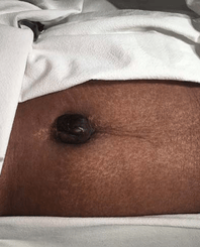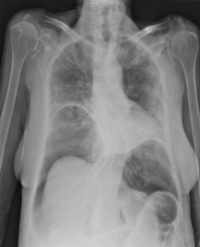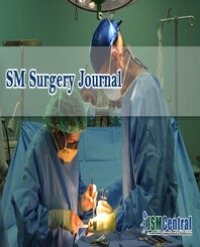
Menstruating From the Umbilical Nodule with Pain as a Rare Case of Primary Umbilical Endometriosis: A Case Report and Discussion on Management Options
Introduction: Endometriosis is a common gynecological condition and presents mainly with involvement of the pelvic organs. Extrapelvic presentations in almost all parts of the body have been reported in the literature. However, umbilical endometriosis that is spontaneous or secondary to surgery is uncommon and accounts for only 0.5% to 1% of all endometriosis cases. We report a recently observed case of primary Umbilical Endometriosis (UE), with the main aim to discuss the management of this rare condition.
Presentation of case: A 35-year-old woman P2L2, NFVD complained of a painful nodule on her umbilical region, bleeding with her menstrual cycle. Ultrasonography showed a hypoechoic lesion with cyctic area 2.1 x 2.8 x 1.8 cm in the umbilicus and no signs of intra-abdominal endometriosis. Wide Excision with 3cm margin of the nodule under spinal anesthesia was performed. Histopathological analysis confirmed the diagnoses that the patient was asymptomatic at follow-up, but nevertheless warned of the risk of recurrence of umbilical endometriosis.
Discussion: Pelvic endometriosis is a common condition, but the diagnosis of primary umbilical endometriosis is difficult and differentials should be considered. Although there is a substantial agreement about the necessity of surgery, treatment options are either local excision of the lesion or removal of the whole umbilicus with or without laparoscopic exploration of the peritoneal cavity. The decision should be tailored for the individual patient, taking into consideration the size of the lesion, the duration of symptoms and the presence of possible pelvic endometriosis.
Conclusion: Wide local excision may be the treatment of choice in patients with UE lesions and differential diagnosis of endometriosis should be considered when an umbilical swelling presents in a woman of reproductive age. No recurrence noted in our in this case after follow up for 1 year.
Vijyalakshmi GN, Mridul GS*, Niyaz A, Vivek K and Kumar Y


